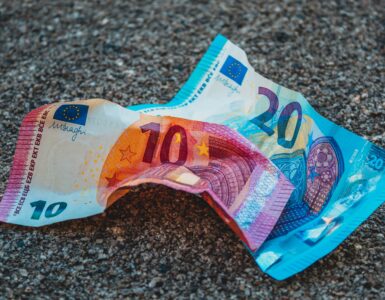Now that you have understood how demand and supply work, it is crucial for us to discuss the concept of elasticity. Elasticity helps us gauge producers’ and consumers’ responses in a free market economy. As such, the equilibrium price depends not only on the demand and supply but also on the elasticities of both the demand and supply.
Suppose we were to exclude the Elasticity of Scale. In that case, there are four main types of elasticities – Price Elasticity of Demand (PED), Price Elasticity of Supply (PES), Income Elasticity of Demand (YED), and Cross-Price Elasticity of Demand (XED).
Price Elasticity of Demand (PED)
Price Elasticity of Demand is responsible for measuring the responsiveness of the quantity demanded a good to a change in its price, ceteris paribus. Simply put, it measures the percentage change in the quantity demanded of a good based on the percentage change in the price of that good.
PED has a formula: %ΔQd ÷ %ΔP
Key: %Δ refers to percentage change, Qd refers to the quantity demanded of the good, and P refers to the price of the good
PED values
PED values are mathematically negative as there is an inverse relationship between the price and quantity demanded of a good. Therefore, we usually take the |PED| value between zero and infinity.
| PED value | PED | Effect on PED |
| |PED| = 0 | Perfectly price inelastic | For a given percentage rise or fall in the price of a good, its quantity demanded remains constant. |
| 0 < |PED| < 1 | Price inelastic | For a given percentage rise or fall in the price of a good, its quantity demanded will fall or rise less than proportionately. |
| |PED| > 1 | Price elastic | For a given percentage rise or fall in the price of a good, its quantity demanded will fall or rise more than proportionately. |
| |PED| = ∞ | Perfectly price elastic | At the given price, the quantity of the good becomes infinitely large. As such, an increase in the price of the good will result in the quantity demanded to fall to zero. |
Factors affecting PED
There are many factors affecting the PED of a good.
- Addictiveness of the good – the more addictive the good, the lower the |PED| of the good
- Availability of substitutes – the more substitutes or the closer the substitutes, the higher the |PED| of the good
- Brand loyalty – reduces the |PED| of the good
- Definition of the good – the more narrowly defined the good, the higher the |PED| of the good
- Degree of necessity of the good – the more necessary the good, the lower the |PED| of the good
- Duration – the demand of the good tends to have a higher |PED| in the long run as compared to the short run
- Percentage of income spent on the good – the larger the proportion of the consumer’s income is spent on the good, the higher the |PED| of the good
- Who pays for the good – if the consumer is not paying for the good, the |PED| value tends to be lower
Price Elasticity of Supply (PES)
Price Elasticity of Supply is responsible for measuring the responsiveness of the quantity supplied of the good to a change in its price, ceteris paribus. More simply, it measures the percentage change in the quantity supplied of a good based on the percentage change in the price of that good.
PES has a formula: %ΔQs ÷ %ΔP
Key: %Δ refers to percentage change, Qs refers to the quantity supplied of the good, and P refers to the price of the good
PES values
Unlike PED values, PES values are mathematically positive as the relationship between the price and the quantity supplied of a good is positive.
| PES value | PES | Effect on PES |
| PES = 0 | Perfectly price inelastic supply | Producers can sell a fixed quantity of the good regardless of its price. |
| 0 < PES < 1 | Price inelastic supply | A given percentage change in the price of good causes a less than proportionate change in the quantity supplied of the good. |
| PES > 1 | Price elastic supply | A given percentage change in the price of good causes a more than proportionate change in the quantity supplied of the good. |
| PES = ∞ | Perfectly price elastic supply | Producers can sell any quantity of the good at a fixed price. |
Factors affecting PES
There are many factors affecting the PES of a good.
- Availability of raw materials
- Capacity of inventories
- Factor mobility
- Length and complexity of production
- Spare production capacity
- Time to respond
Income Elasticity of Demand (YED)
In Economics, Income Elasticity of Demand is responsible for measuring the responsiveness of the demand of a good to the change in income levels, ceteris paribus. To put this simply, it measures the percentage change in the demand of the good based on the percentage change in income levels. It tells us the direction and magnitude in which the demand has shifted.
YED has a formula: YED = %ΔD ÷ %ΔY
Key: %Δ refers to percentage change, D refers to the demand of the good, and Y refers to the income level
YED values
There are three types of goods affecting the YED magnitude: inferior goods, (normal) necessities, and (normal) luxuries. You may be wondering why indicated “normal” before mentioning necessities and luxuries. This is due to normal goods having a positive YED value and inferior goods having a negative YED value. This means that normal goods, such as necessities and luxuries, have a positive income elasticity of demand. Conversely, inferior goods have a negative income elasticity of demand.
That may not have been very clear, so to sum that up:
| YED value | Types of goods | Effect on YED |
| YED < 0 | Inferior goods E.g. Supermarket coffee | When income levels increase, the demand for inferior goods will fall. Conversely, when income levels decrease, the demand for inferior goods will rise. This means that the YED value for inferior goods is inversely proportional to the change in income levels. |
| 0 < YED < 1 | Necessities E.g. Coffee machine coffee | When income levels increase, the demand for necessities will rise less than proportionately. Conversely, when income levels decrease, the demand for necessities will fall less than proportionately. This means that the YED value for necessities is proportional to the change in income levels, and the demand for necessities is price inelastic. |
| YED > 1 | Luxuries E.g. Café coffee | When income levels increase, the demand for necessities will rise more than proportionately. Conversely, when income levels decrease, the demand for necessities will fall more than proportionately. This means that the YED value for necessities is proportional to the change in income levels, and the demand for necessities is price elastic. |

Factors affecting YED
There are two main factors affecting YED – the change in perception of consumers and the degree of necessity of the good.
A change in income levels causes a change in consumers’ perceptions. For example, consumers may perceive a good as necessary when income levels are low. However, when income levels increase, consumers may think of the good as an inferior good. As a result, consumers will switch to substitutes of higher quality.
The degree of necessity of the good mainly applies to normal goods. For necessities, the change in demand is less than proportional regardless of the increase or decrease in income levels. This is due to consumers consuming the same goods no matter their income. On the other hand, luxuries have a more than proportional change in demand – when income levels increase, consumers will buy more luxuries. In contrast, when income levels decrease, consumers will buy fewer luxuries.
Cross-Price Elasticity of Demand (XED)
In Economics, the Cross-Price Elasticity of Demand is responsible for measuring the responsiveness of the demand of one commodity to a change in the price of another, ceteris paribus.
The XED of goods A and B has the formula: XEDAB = %ΔDA ÷ %ΔPB
Key: %Δ refers to percentage change, DA refers to the demand of good A, and PB refers to the price of good B
XED values
This is a little tedious to explain in words, so I summed it up in a table:
| XED value | Relationship between goods A and B | Effect on XED |
| XEDAB < 0 | Complementary goods E.g. Rice and rice cookers | When the price of good B increases, its quantity will decrease. As such, there is less demand for good A. Conversely, when the price of good B decreases, its quantity will increase. As such, there is more demand for good A. |
| XEDAB = 0 | Independent goods E.g. Rice and butter | When the price of good B increases, its quantity will decrease. However, the demand for good A remains constant. This applies when the price of good B decreases as well. |
| XEDAB > 0 | Substitute goods E.g. Rice and noodles | When the price of good B increases, its quantity will decrease. As such, there will be more demand for good A. Conversely, when the price of good B decreases, its quantity will increase. As such, there is less demand for good A. |

Factors affecting XED
The main factor affecting XED is the closeness of goods. The closer the complementary or substitute goods, the more negative and positive the XED values are, respectively.





Add comment